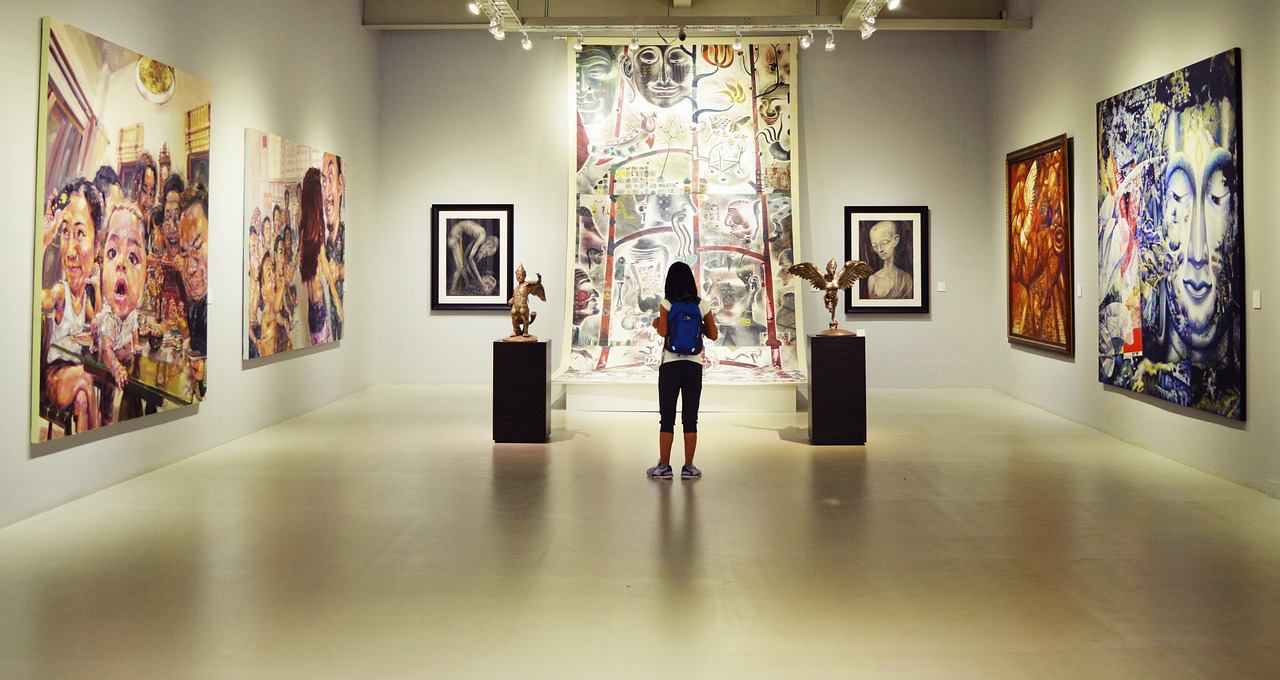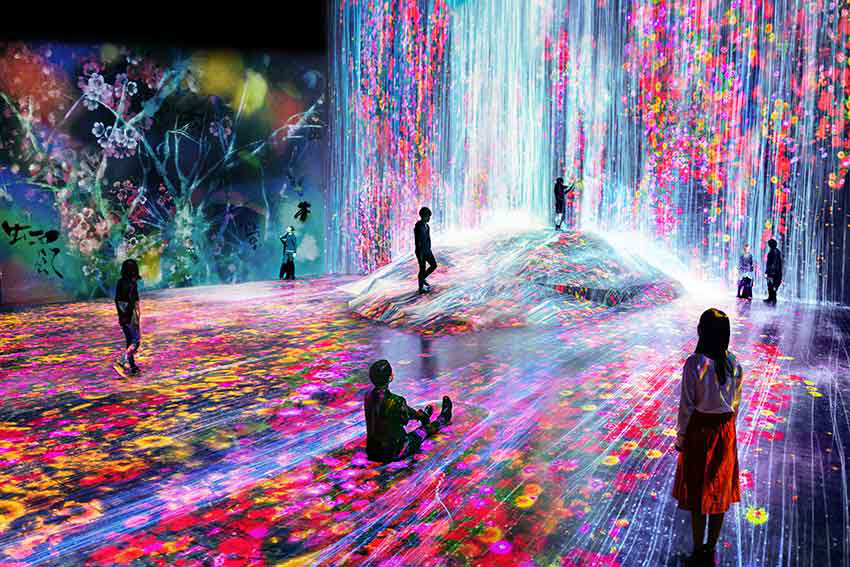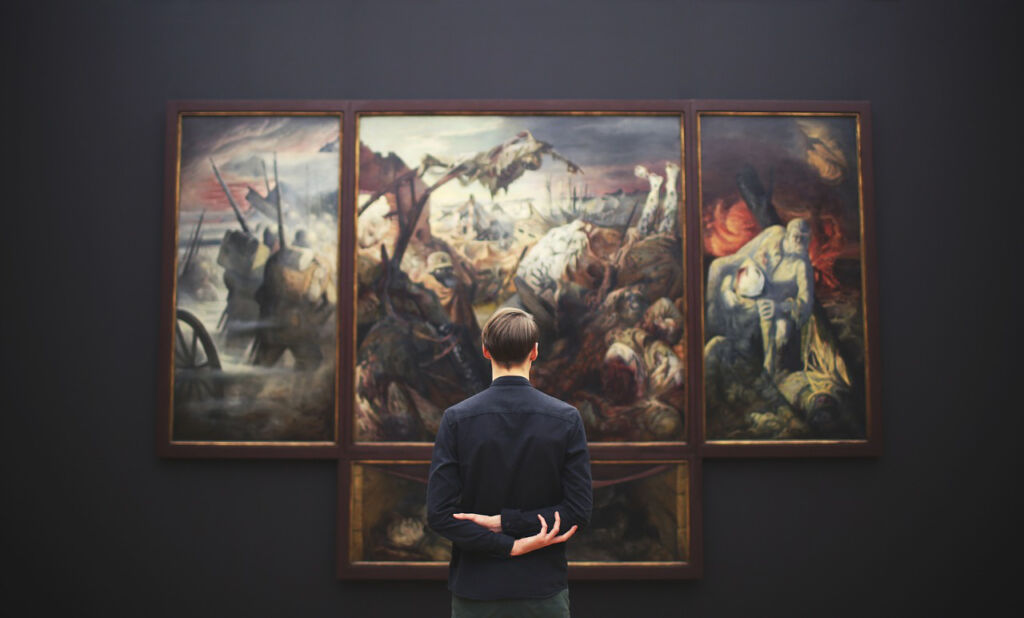Text by Nicholas Burman

Around a year ago, I attended an ‘Art and Technology’ panel at a festival. During the event, a co-founder of an “immersive” digital art company (the sort where famous paintings and museum pieces are animated and projected across a specially-designed space) talked about the project’s purpose. He spoke about a key moment for the team being when they saw someone taking a photo of a grandma holding hands with her granddaughter while admiring one of their spectacles. This somewhat saccharine imaginary reveals their business sense, as the family day trip market segment is large and not typically amenable to art exhibitions. It also demonstrates that a contemporary art “event” isn’t always about art but the participants’ experience and their interaction with and mediation of these events.
In her book, Disordered Attention: How We Look at Art and Performance Today [1], art historian and theorist Claire Bishop provides a survey of how artists are responding to and reflecting this new reality, one in art which reflects these contemporary modes of spectatorship and, at times, becomes a conduit – or excuse – for an event or experience.
It is not a book about the negative effects of mobile technologies and digital interfaces. Bishop explicitly states that she is aware of all of the problems these technologies create and discusses some of them herself. However, her project here is not about moralising; instead, it is about providing an overview of the changes that art and artists are undergoing under the influence of these new social norms. No more being quiet in the white cube: the artist is present and wants you to take a photo.
Disordered Attention: How We Look at Art and Performance Today works as a good follow up to Bishop’s 2011 book Artificial Hells: Participatory Art And The Politics Of Spectatorship, in which she discussed the politics and aesthetics of participatory arts practices. In this more recent work – in which Bishop discusses research-based art, performance exhibitions, interventions, and invocations – the audience member remains a participant, only this time with much more agency, as how they decide to present what they are seeing through their social channels or through private messaging becomes, in a way, part of the work itself. She always examines how these contemporary modes of spectatorship are reflected in the art and art practices themselves.
As Bishop writes in the introduction: This perpetual oscillation between here and elsewhere, consuming and commenting, is central to how we look at art and performance today. It also changes the form of the art we engage with, in ways which are obvious and mundane but also significant in how it makes our experiences so different to those of our ancestors. As she writes later in the book, we look at JPEGs more than we stand in galleries.


Bishop provides numerous examples as to how this social change and transformation of audience engagement and participation has impacted art practices. One of the most engaging narratives in the book is around research-based art. In the case of research-based art, Bishop persuasively describes how work by Anna Boghiguian or Forensic Architecture, for example, in which pieces of documentation are laid out on tables or on stands, mimics how we collate and piece together information on the internet and how we are detectives seeking and collecting tiny snippets of information in our daily lives in order to make sense of the bigger picture. For Bishop, at its best, this genre of work encourages a poetic engagement with visual and textual clues that may not provide clear linearity. At its worst, it is purely didactic, leaving no room for ambiguities or contestation.
Lydia Ourahmane’s 108 Days at the MACBA in Barcelona is a recent show that, to me, encapsulates the tendencies in contemporary art that Bishop illuminates so clearly [2]. Over 108 days, Ourahmane invited 108 local artists and activists to “intervene” in the space. This meant something different was happening in the space nearly every day for the duration of the show. It also meant that at any one time, museum attendees would witness a dance performance, a lecture or discussion, a photography exhibition, painting, etc.
During the handful of times I attended, the non-museum element of the project that stood out to me the most was the eventfulness of the proceedings. Often, the communities featured in or involved in the work on show would be heavily present on those specific days and find themselves engaged, seeing themselves and each other reflected in the work on show. Of course, this was almost always met with a series of clicks and poses: selfies and audience shots being caught on camera and uploaded live. It felt like the museum was attempting an experiment—not just with what sort of work it should be a space for but also as a test case in how to get people to relate to the space. And so the MACBA became, both here and elsewhere, a physical space and a JPEG.
And while 108 Days was not pitched as an art show informed or involving new media technologies, these technologies were, in fact, central to it. They allowed for the documentation and dissemination of the communal and artistic insights and performances which took place. Bishop is keen to stress that the effects of digital technology upon spectatorship are best seen in art that, at first glance, seems to reject digital technology most forcefully. In this framing, ‘real world’ interactions and the desire for ‘human’ events are only understood as ‘authentic’ because they are brought to life through the prism of the impact of digital tools, which generate within us paranoia about the prevalence of falsehoods and fakeness.
Disordered Attention is full of clear, crisp insights that helps us understand the obvious yet surprising impact technology has had on art. While Bishop has a theoretical framework, this never overpowers her empiricism – this is a work that draws deeply (and with a beady eye) on a huge array of exhibitions and artists. It is an essential guide to an art world increasingly typified by projects such as 108 Days, a map of the social architecture in which art is today produced and consumed.





